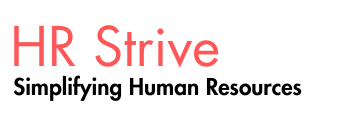Key Business Documents for HR Professionals
Human Resources professionals ought to be intimately acquainted with a diverse array of nonfinancial business documentation. These resources serve as invaluable wellsprings of intelligence, instrumental in informing and refining strategic objectives and operational blueprints.
Business Plan: This foundational document serves as the organizational equivalent of a business case, articulating the very raison d'être of the enterprise—its core purpose, what it was brought into existence to accomplish or realize. A comprehensive business plan meticulously details the entity's structural framework, its marketing schema, and its prospective financial trajectories.
Strategic Plan: This seminal document delineates the methodology by which an organization intends to fulfill its overarching purpose. It meticulously encompasses the mission and vision statements; specific strategic objectives, overarching goals, and actionable initiatives; alongside pertinent budgetary allocations. Representing a more granular iteration of a business plan, it offers an enhanced degree of specificity and detail. Strategic plans can, moreover, incorporate granular specifics regarding Key Performance Indicators (KPIs).
Organizational Chart: This diagrammatic representation visually depicts the hierarchical structure inherent within an organization. It furnishes critical insights into reporting lines and other interdependencies between individual personnel, functional units, and various departments. Such charts prove eminently beneficial to HR, enabling an astute assessment of whether the organization possesses the requisite number of suitably skilled employees optimally positioned in appropriate roles. For geographically dispersed entities, the organizational chart emerges as an exemplary instrument for meticulously tracking employee locations and their precise integration within the overarching structure and hierarchy.
Standard Operating Procedures (SOPs): These are formalized directives, typically articulated in a sequential, step-by-step format, that prescribe the precise methodology for executing a work process or activity. SOPs are customarily employed for tasks and processes characterized by repetition or minimal variance, thereby fostering enhanced operational efficiency. Numerous HR functions, such as hiring protocols, employee onboarding procedures, training modules, exit interview processes, and annual performance reviews, may be governed by SOPs. A thorough understanding of other departmental SOPs empowers HR professionals to navigate interdepartmental activities with heightened efficacy.
Grants: A grant constitutes a form of fiscal aid extended by a governmental body to underwrite an innovative concept or project perceived to furnish a public service or galvanize economic activity. Illustrative examples of the intended outcomes of grant-funded endeavors might include ecological or pedagogical benefits, the furtherance of cultural and artistic pursuits, the generation of employment opportunities, or initiatives pertaining to disaster recovery.
Contracts: A contract represents a legally binding accord forged between two or more distinct parties, typically pertaining to the exchange of tangible goods, services, or pecuniary considerations. It rigorously defines and governs the entitlements and obligations incumbent upon each participant.
Business Continuity Plans: A business continuity plan is an exhaustive document that elucidates an organization's methodology for sustaining operational functionality amidst unforeseen disruptions. While HR will undoubtedly possess its own contingency protocols for disruptions (as an integral facet of risk management), a holistic business continuity plan comprehensively accounts for every conceivable aspect of an organization susceptible to impact. These plans will meticulously detail provisions for supplies, equipment, employee deployment, data backup protocols, and alternative operational sites; they are occasionally presented as a straightforward checklist. HR is uniquely positioned to assume a pivotal role in the formulation of these crucial plans, as well as in their execution during periods of exigency, and organizational leadership must ensure comprehensive familiarity with these documents.

No comments:
Post a Comment